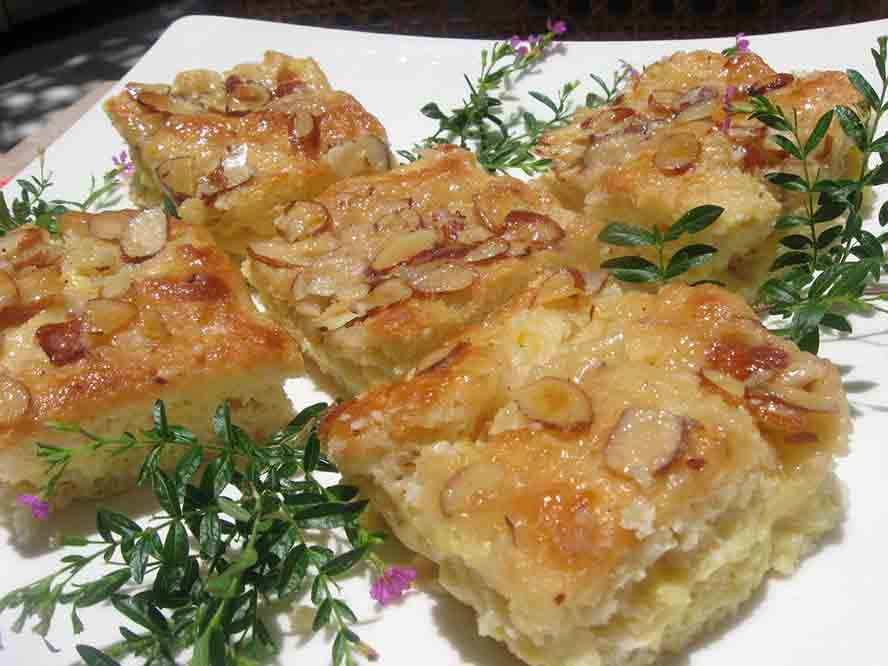Bienenstich Kuchen
Litterally means
"Bee Sting Cake"
Go right to Recipe

Cream filled Cake
with Crunchy Almond Topping
A little about how it got the name...
"Bee Sting Cake"
Bienenstich, or "bee sting cake," holds a special place in German hearts because it perfectly embodies the kuchen tradition—combining simple ingredients into something extraordinary.
This uses a basic yeast dough in a kuchen, but fills it with rich cream custard filling. However it has a unique topping, with a crunch and nuttiness that provides the addictive sting!
This honeyed crust connects to Germany's ancient beekeeping traditions while creating a perfect balance of buttery, nutty sweetness. Beyond taste, Bienenstich carries deep nostalgic power—it's the cake of childhood birthdays, Sunday Kaffee und Kuchen with Oma, and village bakery windows.
There are 2 legends as to how it got it's name. One was a that
Baker Boys of Andernach
The town of Linz am Rhein was planning a revenge attack on its rival, Andernach, after losing toll-collecting rights on the Rhine River. The attack was planned for the early morning when everyone was asleep. Luckily for Andernach, two apprentice bakers were on the city wall, possibly stealing honey from beehives kept there by the guards.They spotted the approaching soldiers and, in a quick-witted act, began throwing the beehives down on the invaders.The soldiers, badly stung, fled in a panic. The bakers were hailed as heroes, and a special cake with a sweet honey-almond topping was created to celebrate their ingenuity and the bees' unexpected help.
If you don't believe that one maybe you'll believe this one,
Legend 2: The baker and the bee
This alternative legend offers a simpler, more direct explanation for the name. A baker, busy creating a new cake recipe, is distracted by a bee attracted to the honey and sweet ingredients. The bee stings the baker, leading him to christen his new creation the "bee sting
Go Here to Make Bienenstich Kuchen
with
Step by Step Pictures
  
|